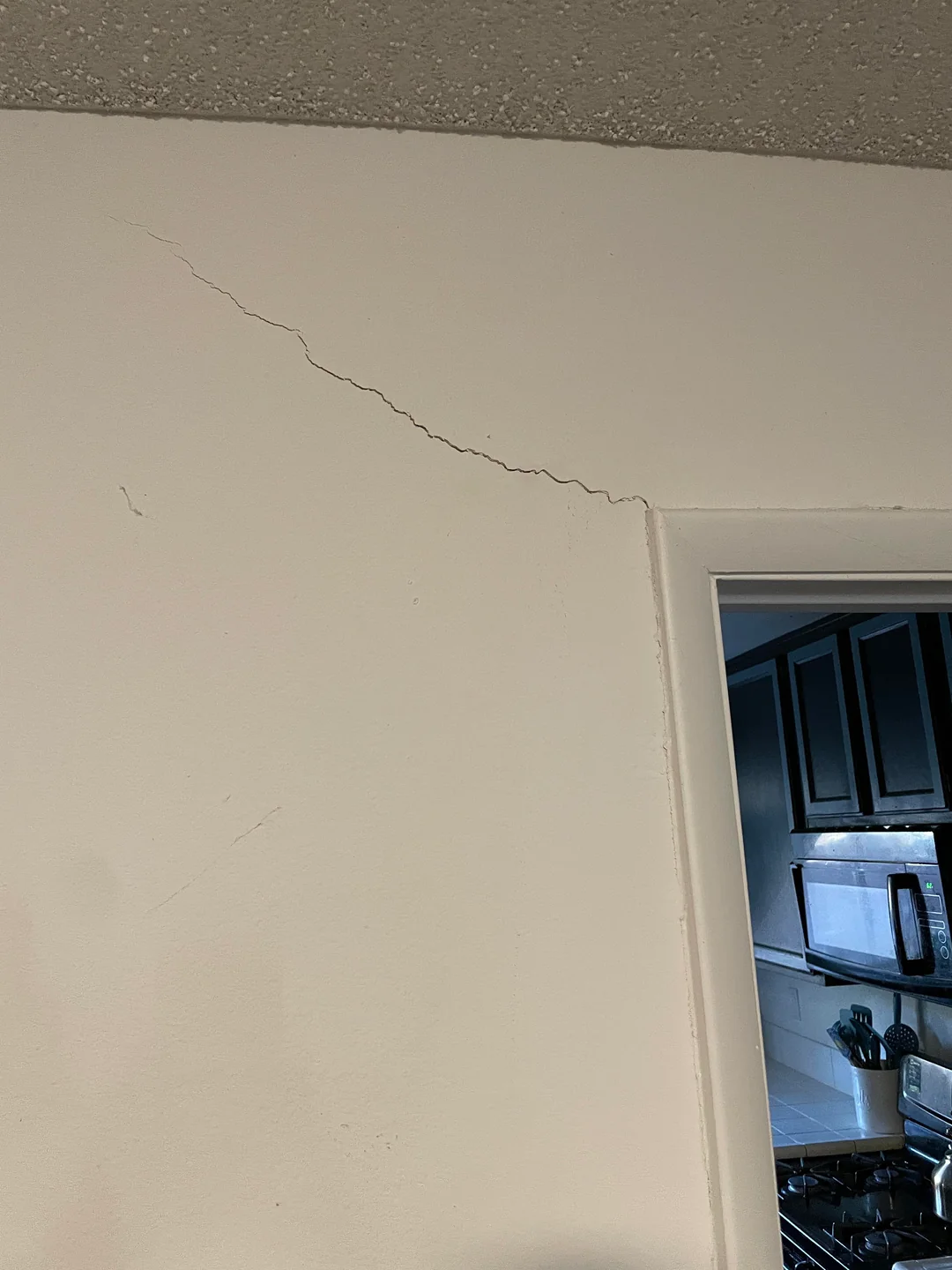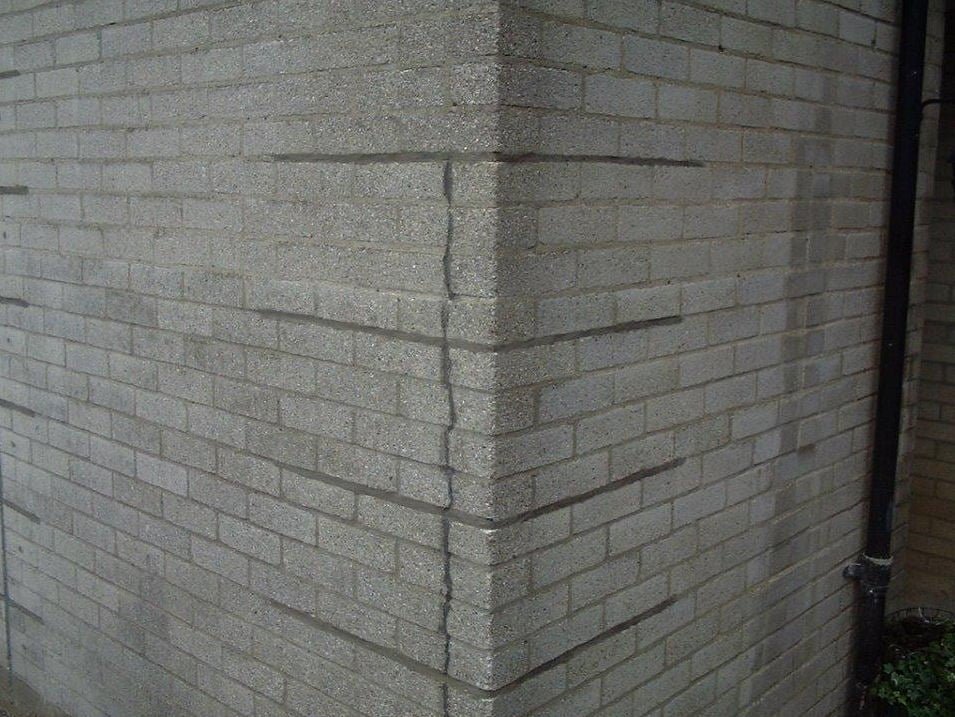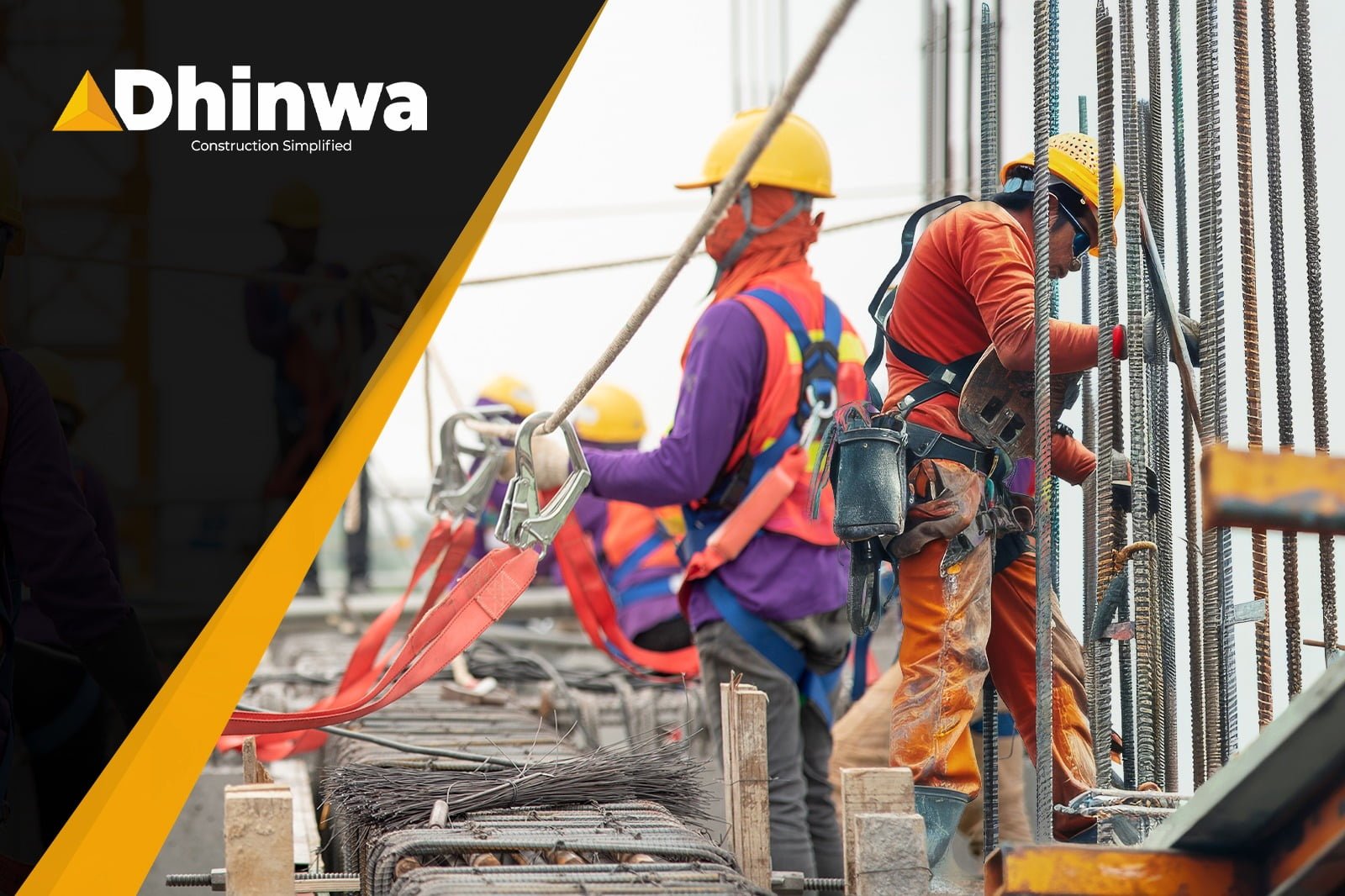Cracks in Buildings: Causes and Solutions

Table of Contents
Cracks in buildings can be a common problem, and they can occur for a variety of reasons. While some cracks may be purely cosmetic, others can indicate serious structural issues that require immediate attention. Understanding the causes of cracks in buildings is essential for determining the appropriate course of action to address them.
One of the most common causes of building cracks is settlement. This occurs when the soil beneath the foundation compresses or shifts, causing the foundation to sink or settle. Natural causes such as earthquakes, floods, and windstorms can also cause building cracks. Additionally, poor construction practices, improper structural design and specifications, and poor maintenance can contribute to the development of cracks in buildings. Thus, hiring an experienced construction contractor like Dhinwa Construction & Engineering is extremely important for the longevity of your project with minimal and less frequent maintenance requirements. Let us take you through an introduction to cracks in buildings.
Understanding Cracks
1. What are the causes of Cracks in buildings?
Among the various types of buildings, cracks can be caused by a number of factors, including poor design, construction, and maintenance practices. Some common causes of cracks include:
- Settlement: When the soil beneath a building settles or shifts, it can cause the foundation to crack.
- Moisture: Water can seep into the building’s foundation or walls and cause cracks to form as it freezes and expands.
- Temperature changes: Extreme temperature changes can cause materials to expand and contract, leading to cracks.
- Poor construction: Improperly mixed or applied materials, inadequate reinforcement, and other construction errors can all contribute to the formation of cracks.
2. Types of Cracks in Buildings
There are several different types of cracks that can occur in buildings, each with its own unique characteristics and causes. Some common types of cracks in buildings include:
- Hairline cracks: These are very thin, shallow cracks that are often caused by minor settlement or temperature changes.
- Structural cracks: These are larger cracks that can indicate a more serious issue with the building’s foundation or structure.
- Settlement cracks: These are cracks that occur due to changes in the soil beneath the building, often caused by poor drainage or soil compaction.
- Shrinkage cracks: These are cracks that occur as concrete or other building materials dry and shrink.
3. Signs and Symptoms of Cracks in Buildings
It is important to be able to recognize the signs and symptoms of cracks in buildings in order to address them before they become a serious problem. Some common signs of cracks include:
- Visible cracks in the walls, floors, or foundation of the building.
- Uneven or sloping floors.
- Doors or windows that stick or do not close properly.
- Water damage or dampness in the building.
By understanding the causes, types, and signs of cracks in buildings, property owners and construction professionals can take steps to prevent them from occurring and address them promptly when they do. For construction contractors like us, it is vital to hire experienced individuals who know the signs and symptoms of cracks in buildings and take necessary preventive measures to nullify even the remotest of the possibility of cracks in the constructed building. Having gone through this brief introduction to cracks in buildings, let’s now dig a little bit deeper into cracks and how they affect the structural integrity of the building.
Structural Integrity
1. Assessment of Damage

Assessing the damage caused by cracks in buildings is essential to ensure the safety and stability of the structure. A thorough inspection by a qualified engineer can determine the severity of the damage and identify the root cause of the cracks. The engineer will evaluate the type, size, and location of the cracks, as well as the materials used in the construction of the building.
The assessment of damage will also determine whether the cracks are superficial or whether they pose a significant risk to the structural integrity of the building. If the damage is severe, immediate repairs may be necessary to prevent further deterioration and potential collapse of the building.
2. Impact on Building Stability

Cracks in buildings can have a significant impact on the stability of the structure. The severity and location of the cracks can affect the load-bearing capacity of the building, which can compromise the safety of the occupants.
If the cracks are located in load-bearing walls or columns, they can weaken the structure and cause it to shift or collapse. The cracks can also allow moisture to penetrate the building, which can lead to corrosion of the reinforcement and further deterioration of the structure.
It is essential to address the cracks in buildings promptly to maintain the structural integrity and safety of the building. Regular inspections and maintenance can help identify and address potential issues before they become more severe. At Dhinwa Construction & Engineering, the safety of the people be it laborers, engineers, residents of the project after completion, and even the on-site guards is our priority and we follow all the safety rules and regulations as well as implement the best construction practices for the safety and security of everyone involved.
Monitoring and Measurement of Cracks in Buildings
1. Monitoring Techniques
Cracks in buildings can be a serious issue, affecting the structural integrity of a building and potentially posing a safety risk. Therefore, it is important to monitor and measure the size and progression of cracks to ensure the safety of the building and its occupants.
One commonly used technique for crack monitoring is the plastic tell-tale method. This method involves placing two overlapped plates on either side of the crack, with one plate marked in millimeter units of measurement and the other plate marked with a cursor. As the crack widens, the cursor will move along the marked plate, allowing for the measurement of crack width changes.
Another technique for crack monitoring is the use of sensors. These sensors can be placed on or near the crack and can detect changes in crack width or length. Some sensors can even provide real-time data on crack movement and changes.
2. Measurement Tools
Accurate measurement of crack size is crucial for determining the severity of the issue and deciding on appropriate repairs. There are several tools available for measuring crack size, including:
- Vernier calipers: These calipers can measure crack width and length with high accuracy, making them a reliable option for crack measurement.
- Crack gauges: These gauges are designed specifically for measuring crack width and can be attached to the surface of the crack for easy measurement.
- Image analysis software: This software can analyze images of the crack and provide measurements of crack width and length.
It is important to choose the appropriate measurement tool for the specific situation to ensure accurate measurements. It is only possible when the construction firm that you hire, has a strongly built team of experienced professionals who know what they are doing. Regular monitoring and measurement of cracks can help prevent further damage and ensure the safety of the building and its occupants.
Preventive Measures for Cracks in Buildings
1. Design Considerations

The design of the building’s foundation is critical in preventing settlement cracks. A well-designed foundation that considers soil conditions and building loads is important. It is essential to ensure that proper compaction of trenches and fills is done during construction. Additionally, the use of expansion joints and proper placement of reinforcement can help prevent cracks due to thermal or moisture movement.
2. Construction Best Practices
Proper construction practices are essential in preventing cracks in buildings. This includes ensuring that the concrete is placed and compacted correctly and that the curing process is done correctly. Proper curing helps prevent early-age cracking due to rapid moisture loss. It is also essential to ensure that the building is constructed on a stable and level surface to prevent settlement cracks. At Dhinwa Construction & Engineering, we understand how important it is to appropriately implement and follow the best construction practices and we have been committed to it since day one.
3. Material Selection

The selection of building materials can also play a significant role in preventing cracks. Using high-quality materials that have been tested and certified can help prevent issues related to permeability, creep, and corrosion. Additionally, the use of admixtures and sealants can help improve the durability of the building and prevent cracks due to moisture movement. To ensure that the materials we use on our project sites are of top-notch quality, we have partnered with a lot of industry-leading brands (check our associates) and they deserve some credit for helping us build projects that bring a smile to the customer’s face.
In summary, preventing cracks in buildings requires a combination of design considerations, construction best practices, and material selection. By taking proactive measures in these areas, building owners and professionals can help ensure the longevity and stability of the structure.
Repair Techniques
1. Epoxy injections
Epoxy injection is a popular repair technique used to fix cracks in concrete structures. This technique involves injecting an epoxy resin into the cracks to fill and bond them together. Epoxy injection is suitable for both vertical and horizontal cracks, and it can be used to repair cracks of different sizes. This technique is effective in restoring the structural integrity of the building, and it can also improve the appearance of the cracked surface.
2. Stitching
Stitching is a method used to repair cracks in masonry walls. This technique involves drilling holes on both sides of the crack and inserting metal stitching rods into them. The rods are then bonded to the wall using an epoxy adhesive. This technique is suitable for repairing cracks in walls that are not subjected to heavy loads. Stitching is a cost-effective repair method, and it can be used to repair cracks of different sizes.
3. Underpinning
Underpinning is a technique used to repair cracks in the foundation of a building. This technique involves excavating the soil beneath the foundation and installing additional support to strengthen it. The additional support can be in the form of concrete or steel. Underpinning is a complex repair method that requires the expertise of a structural engineer. This technique is suitable for repairing cracks in the foundation caused by settlement or soil movement.
4. Flexi-cabling
Flexi-cabling is a technique used to repair cracks in concrete structures. This technique involves installing steel cables in a grid pattern over the surface of the cracked area. The cables are then tightened to pull the cracked area together. Flexi-cabling is suitable for repairing large cracks in concrete structures, and it can also be used to reinforce the structure. This technique is effective in restoring the structural integrity of the building, and it can also improve the appearance of the cracked surface.
In conclusion, there are several repair techniques that can be used to fix cracks in buildings. The choice of repair technique depends on the type and severity of the crack, as well as the material of the building. It is important to consult a structural engineer to determine the best repair technique for a particular situation
Regulations & Standards
1. Building Codes
Building codes are regulations that set minimum standards for the design, construction, and maintenance of buildings. These codes are developed by government agencies and are enforced by local building departments. The codes are designed to ensure that buildings are safe, healthy, and accessible for all occupants.
In India, the National Building Code of India 2016 (NBC 2016) is the primary code for regulating building construction activities across the country. It serves as a model code for adoption by all local bodies or private construction agencies. The code mainly contains administrative regulations and development control rules.
In addition to the NBC 2016, the Bureau of Indian Standards (BIS) has developed several standards related to building materials, reinforcement and detailing, functional requirements of buildings, timber engineering, foundation of buildings, and prefabrication. The Handbook on Causes and Prevention of Cracks in Buildings, which is one of the handbooks in this series, deals with the various causes of non-structural cracks that are due to moisture changes, thermal variations, elastic deformation, creep, and chemical reactions.
2. Inspection Requirements

Building inspections are an essential part of the construction process. They ensure that buildings are constructed according to the approved plans and meet the minimum standards set by building codes. Building inspections are conducted by local building departments and are required at various stages of construction.
In India, building inspections are conducted by local municipal corporations or councils. The inspections are conducted at various stages of construction, including the foundation, framing, plumbing, electrical, and final inspections. The inspections are typically conducted by a building inspector who is trained and certified to ensure that the construction meets the minimum standards set by building codes.
It is important for building owners and contractors to comply with inspection requirements to ensure that their buildings are safe, healthy, and accessible for all occupants. Failure to comply with inspection requirements can result in fines, penalties, and legal liabilities. Following all the best of the best construction practices, we have never failed any inspection at any stage of the project and we are very proud of it.
Case Studies on Cracks in Buildings
1. historical Buildings
Cracks in historical buildings have been a concern for many years. A thorough study was conducted on the cracks in the St. Mark’s Basilica in Venice, Italy. The study revealed that the cracks were caused by a combination of factors, including the settlement of the foundation, the corrosion of the reinforcement, and the lack of proper maintenance. The remedial measures taken to repair the cracks included the use of stainless steel reinforcement, the installation of new foundations, and the injection of epoxy resins.
Another historical building that suffered from cracks was the Leaning Tower of Pisa in Italy. The cracks in the tower were caused by the settlement of the foundation and the lack of proper maintenance. The remedial measures taken to repair the cracks included the installation of a new foundation system, the use of stainless steel reinforcement, and the injection of epoxy resins.
2. Modern Structures
Modern structures are not immune to cracks. A case study was conducted on the cracks in the Burj Khalifa in Dubai, the tallest building in the world. The study revealed that the cracks were caused by a combination of factors, including the thermal movement of the structure, the settlement of the foundation, and the lack of proper maintenance. The remedial measures taken to repair the cracks included the installation of a new foundation system, the use of stainless steel reinforcement, and the injection of epoxy resins.
Another modern structure that suffered from cracks was the Millennium Bridge in London. The cracks in the bridge were caused by the vibration of the structure, which was not properly accounted for in the design. The remedial measures taken to repair the cracks included the installation of dampers to reduce the vibration of the structure.
In conclusion, cracks in buildings can be caused by a variety of factors, and remedial measures must be taken to repair the cracks and prevent further damage. Historical buildings and modern structures alike can suffer from cracks, and proper maintenance is essential to prevent them.












